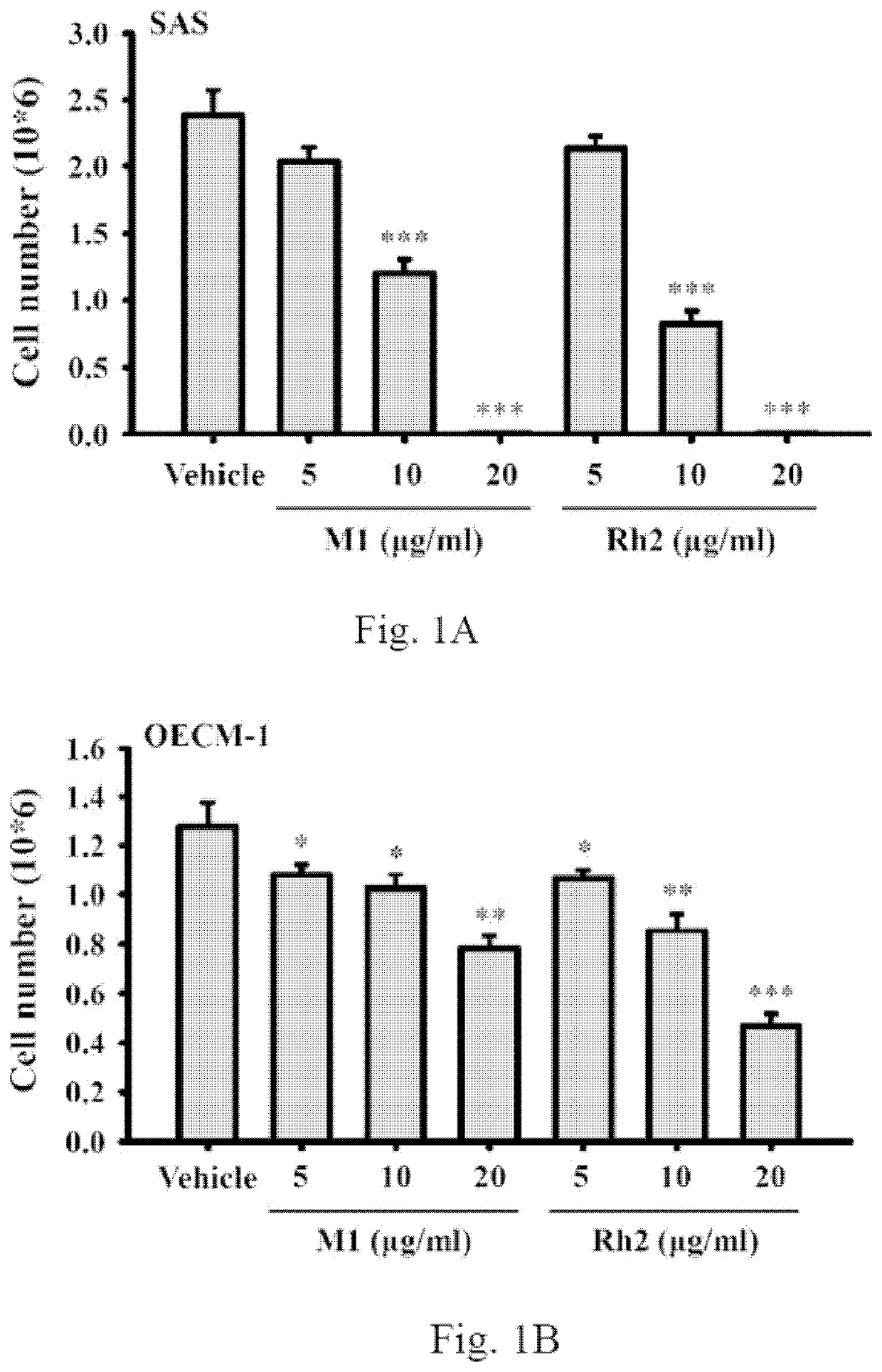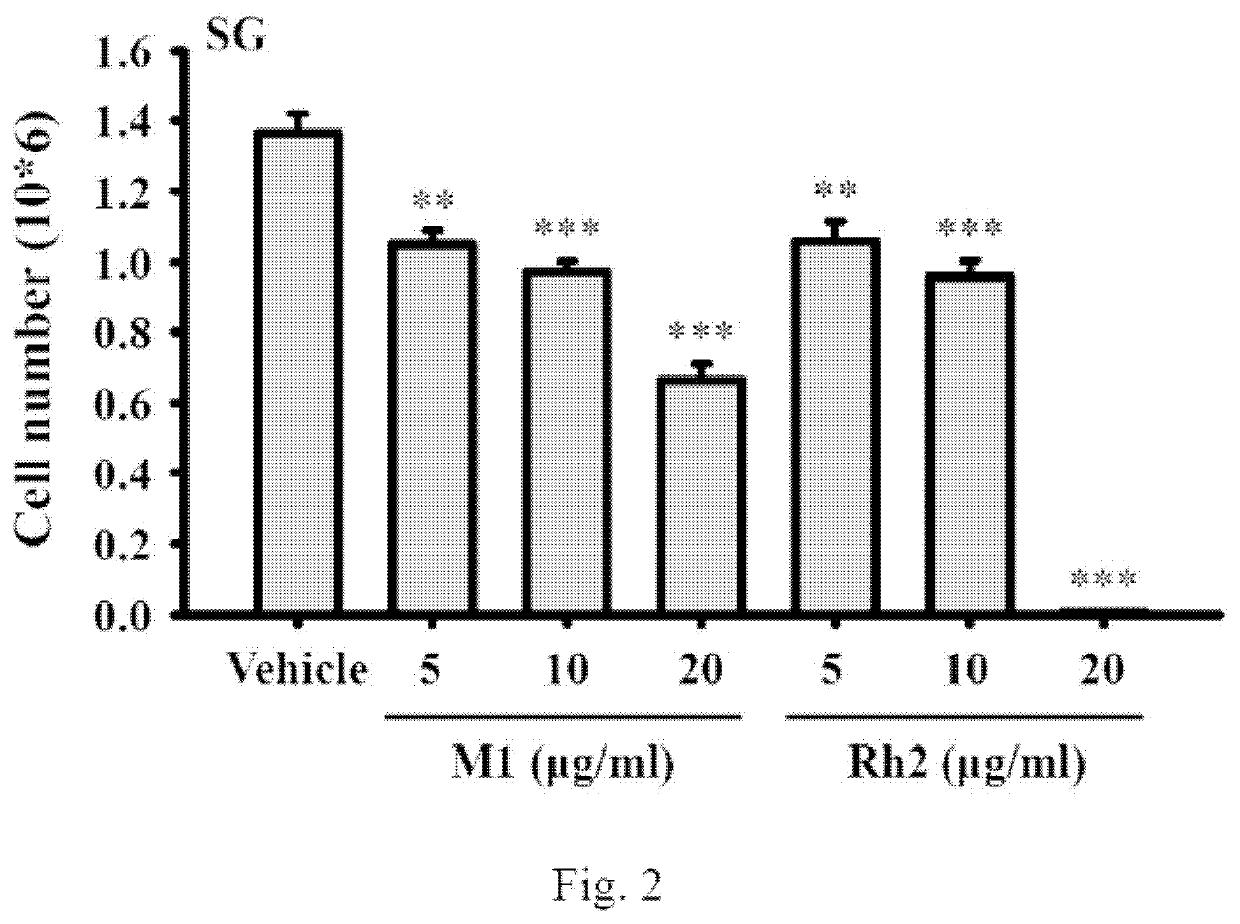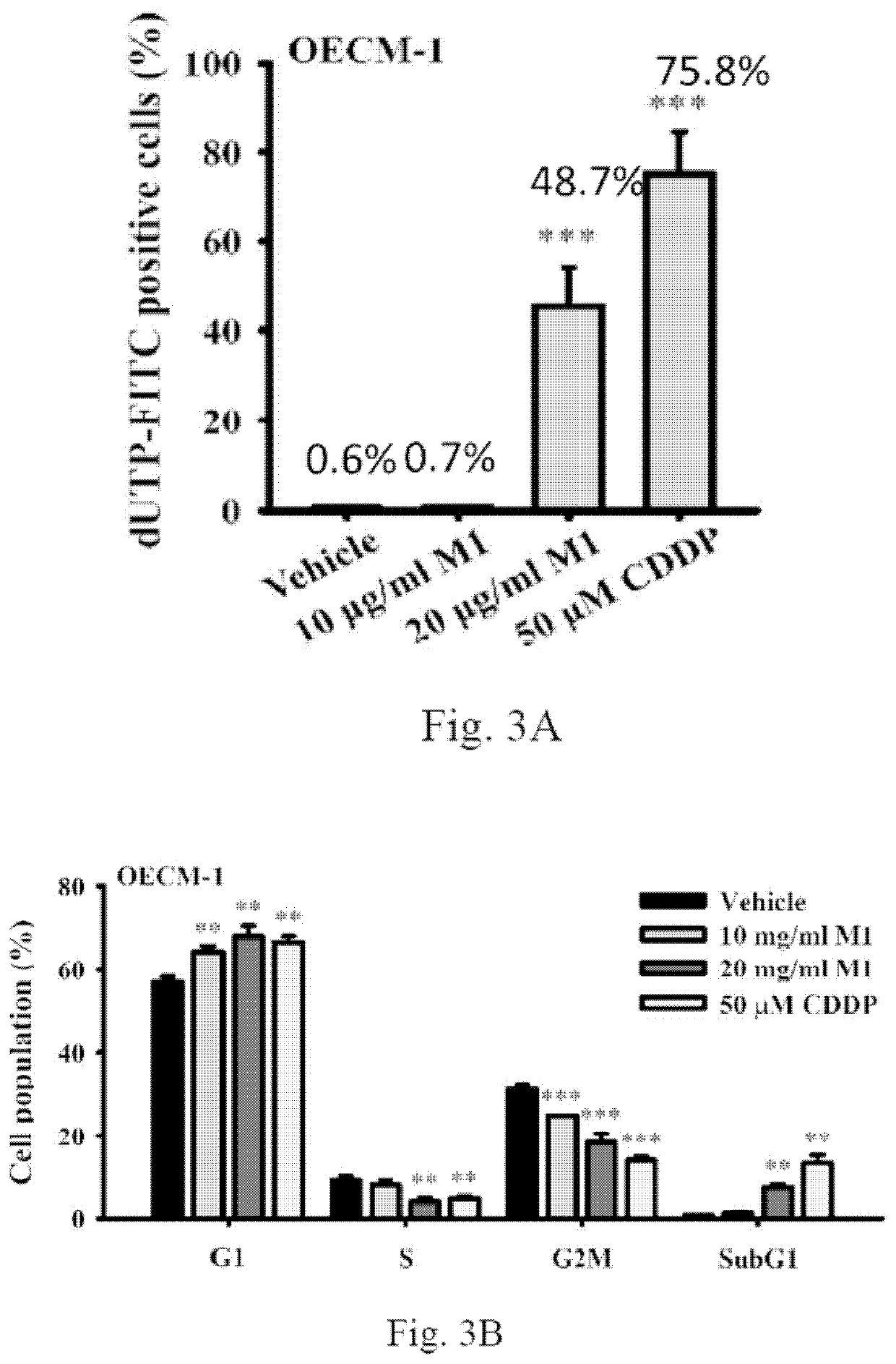Use of ginsenoside m1 for manufacturing medicament for treating oral cancer
a technology of ginsenoside and manufacturing medicaments, which is applied in the field of new use of ginsenoside m1 for treating oral cancer, can solve the problems of poor survival rate of patients undergone anti-cancer treatment, low quality of life of patients, and even life-threatening complications, and achieves the effects of reducing tumor growth in oral cancer animals, reducing tumor growth, and reducing tumor growth
- Summary
- Abstract
- Description
- Claims
- Application Information
AI Technical Summary
Benefits of technology
Problems solved by technology
Method used
Image
Examples
example 1
de M1 Inhibited the Viability of Human Oral Cancer Cells
[0046]Plate 5×105 human oral cancer cells SAS per 6-cm dish in 2 ml of culture medium and were grown overnight at 37° C. in a 5% CO2 incubator. The cells were incubated for 24 h with ginsenoside M1 (5˜20 μg / ml), ginsenoside Rh2 (5˜20 μg / ml) or vehicle. Each group contains a final DMSO concentration of 0.1%. Thereafter, the cell numbers were counted by Trypan blue exclusion method. We found that ginsenoside M1 and ginsenoside Rh2 dose-dependently inhibited the cell numbers of human oral cancer SAS cells (FIG. 1A) and human oral cancer OECM-1 cells (FIG. 1B). These results indicated that both ginsenoside M1 and ginsenoside Rh2 inhibited the viability of human oral cancer cells; however, there was no significant difference between ginsenoside M1 and ginsenoside Rh2. The data were expressed as mean±SD; n=3. *, ** and *** indicate a significant difference at the level of p<0.05, p<0.01 and p<0.001, respectively, compared to vehicle-...
example 2
de M1 Showed Less Toxic to Normal Human Gingival Epithelioid Cells than Ginsenoside Rh2
[0047]Plate 5×105 normal human gingival epithelioid cell line SG per 6-cm dish in 2 ml of culture medium and were grown overnight at 37° C. in a 5% CO2 incubator. The cells were incubated for 24 h with ginsenoside M1 (5˜20 μg / ml), ginsenoside Rh2 (5˜20 μg / ml) or vehicle. Each group contains a final DMSO concentration of 0.1%. Thereafter, the cell numbers were counted by Trypan blue exclusion method. We found that ginsenoside M1 showed less toxic to SG cells than ginsenoside Rh2 (FIG. 2). Ginsenoside Rh2 at 20 μg / ml completely killed the SG cells; however, ginsenoside M1 at 20 μg / ml only reduced 50% cell number compared to control cells (namely at least 50% normal cells were preserved) (FIG. 2). The data were expressed as mean±SD; n=3. ** and *** indicate a significant difference at the level of p<0.01 and p<0.001, respectively, compared to vehicle-control cells. (One-way ANOVA with Dunnett's multi...
example 3
de M1 Induced Apoptosis in Human Oral Cancer Cells
[0048]To gain further insight into the mode of action of ginsenoside M1, three assays targeting hallmarks of apoptosis, namely (1) the apoptotic DNA breaks assayed by terminal deoxynucleotidyl transferase dUTP nick end labeling (TUNEL) assay, (2) the cell cycle assayed by flow cytometry after propidium iodide (PI)-staining nuclei, (3) the PI / Annexin V double staining assay, and (4) caspase activation were performed. Plate 1×106 human oral cancer cells OECM-1 per 6-cm dish in 2 ml of culture medium and were grown overnight at 37° C. in a 5% CO2 incubator. The cells were incubated for 24 h with ginsenoside M1 (10˜20 μg / ml), 50 μM cistaplatin (CDDP) or vehicle. Each group contains a final DMSO concentration of 0.1%. Thereafter, three assays were performed. We found that 20 μg / ml ginsenoside M1 and 50 μM CDDP, but not 10 μg / ml ginsenoside M1 significantly induced apoptotic DNA breaks in OECM-1 cells (FIG. 3A). In addition, the effect of ...
PUM
 Login to View More
Login to View More Abstract
Description
Claims
Application Information
 Login to View More
Login to View More - R&D
- Intellectual Property
- Life Sciences
- Materials
- Tech Scout
- Unparalleled Data Quality
- Higher Quality Content
- 60% Fewer Hallucinations
Browse by: Latest US Patents, China's latest patents, Technical Efficacy Thesaurus, Application Domain, Technology Topic, Popular Technical Reports.
© 2025 PatSnap. All rights reserved.Legal|Privacy policy|Modern Slavery Act Transparency Statement|Sitemap|About US| Contact US: help@patsnap.com



